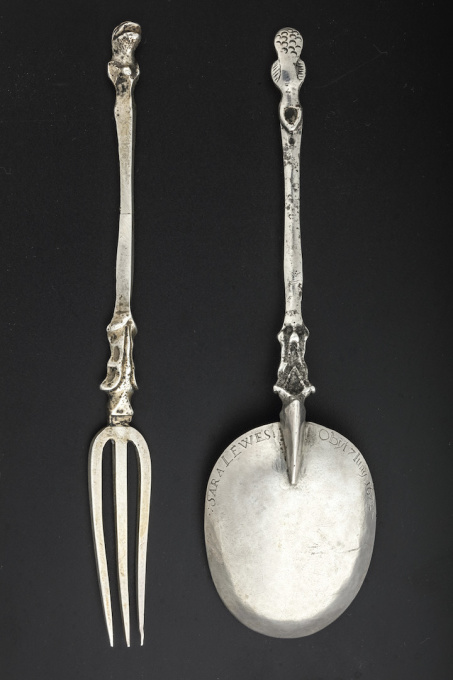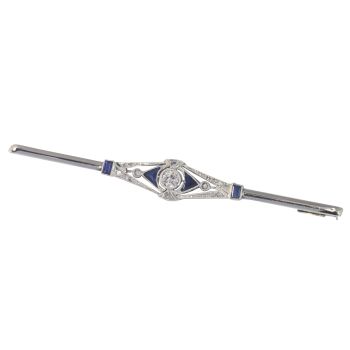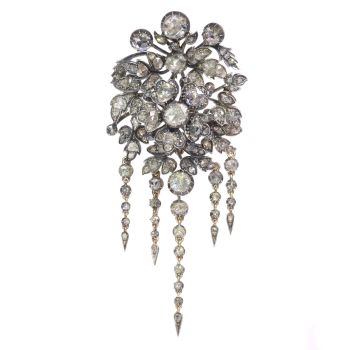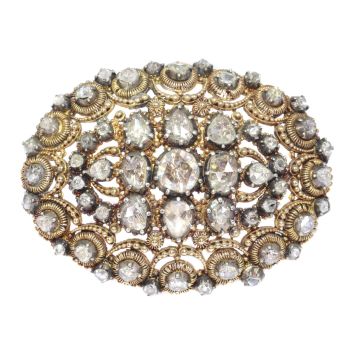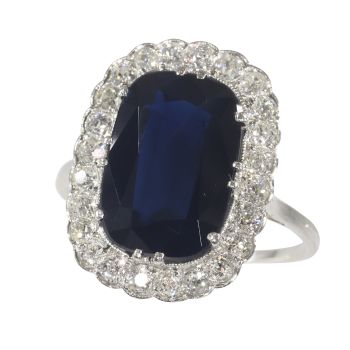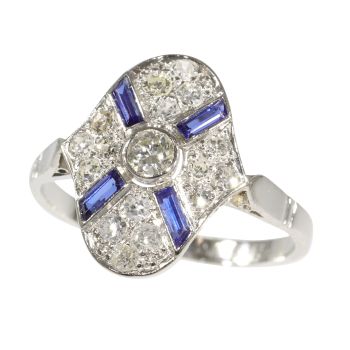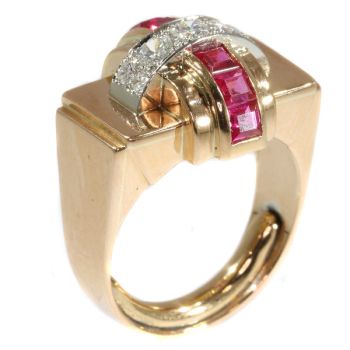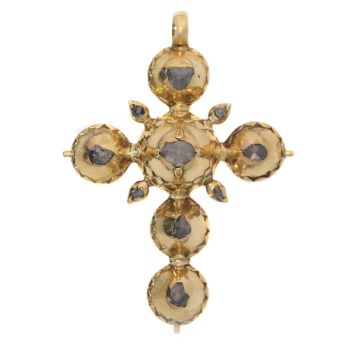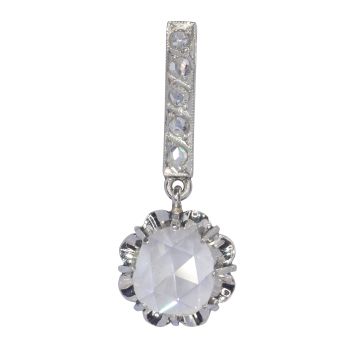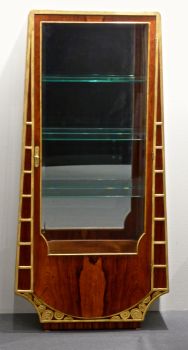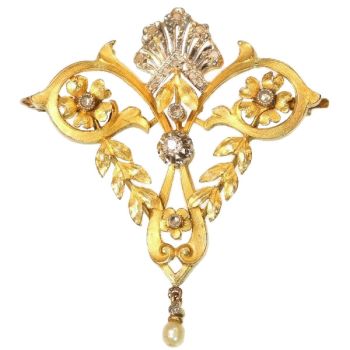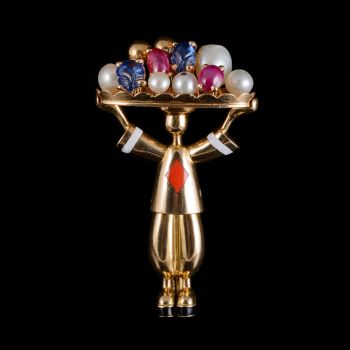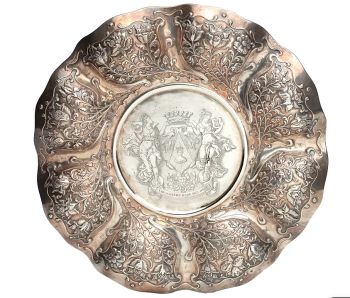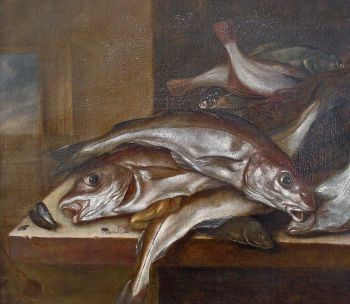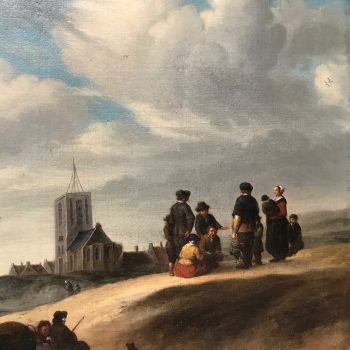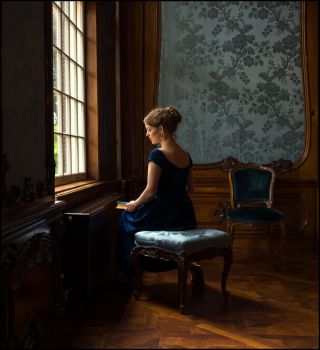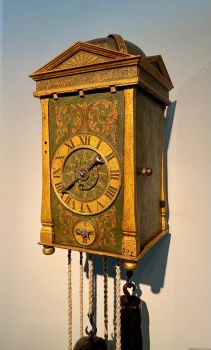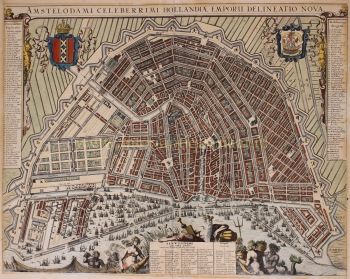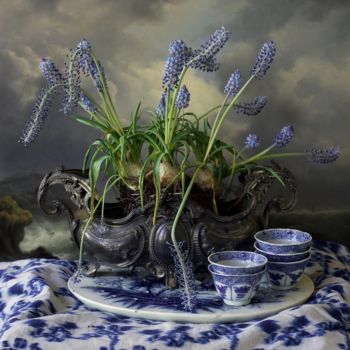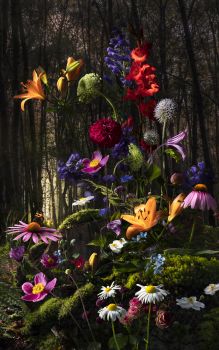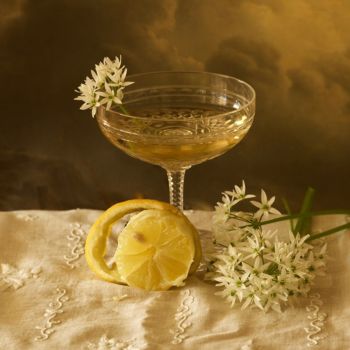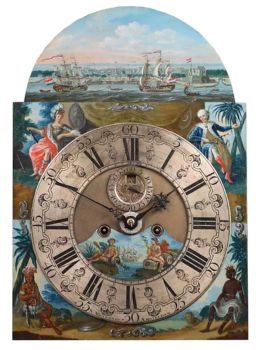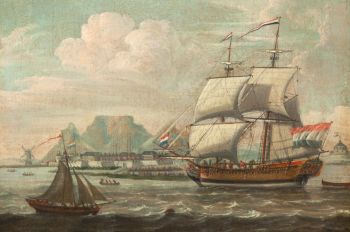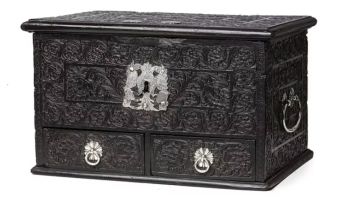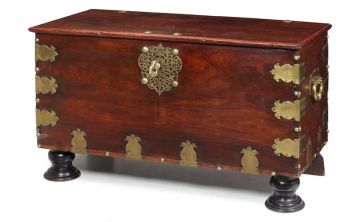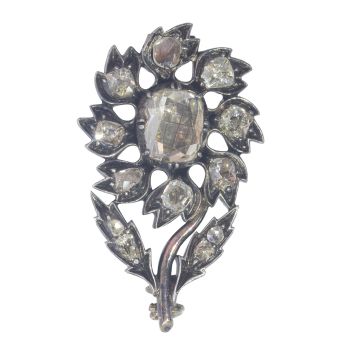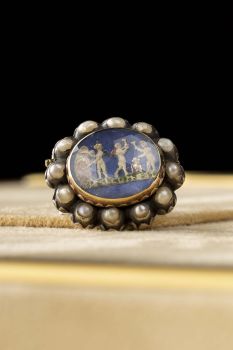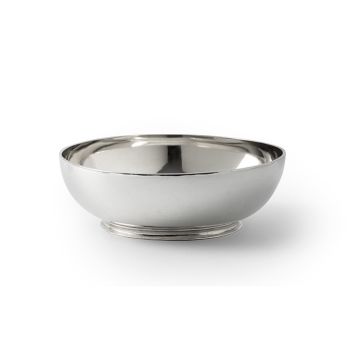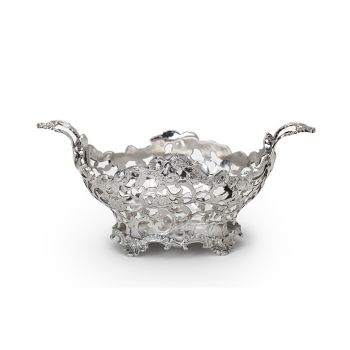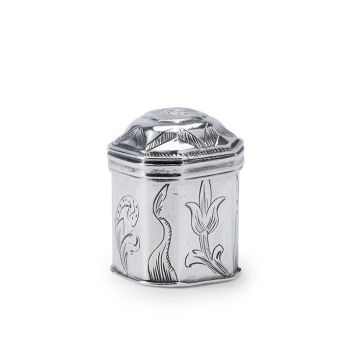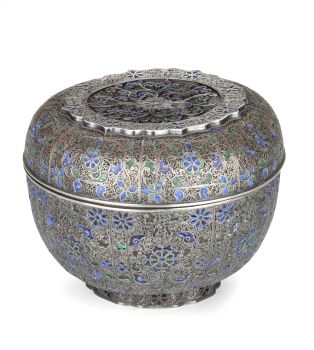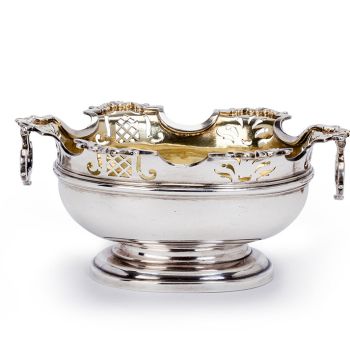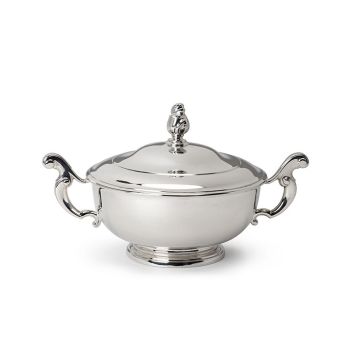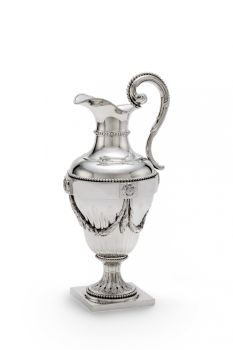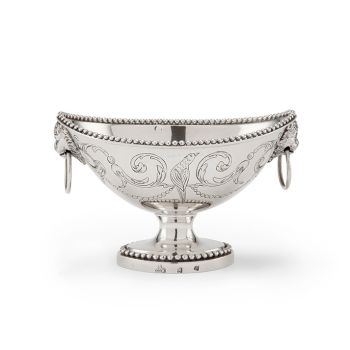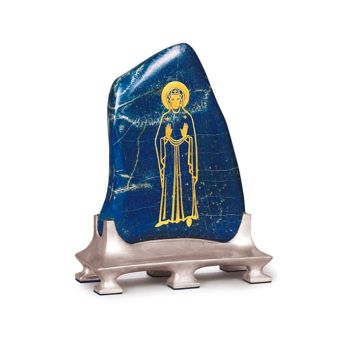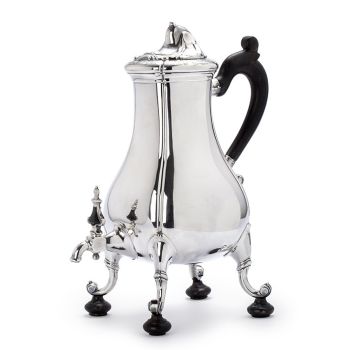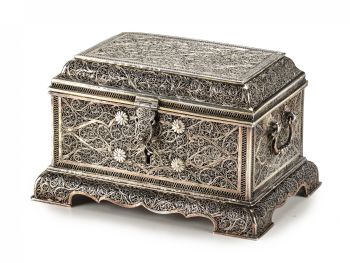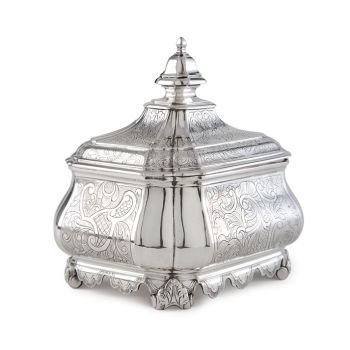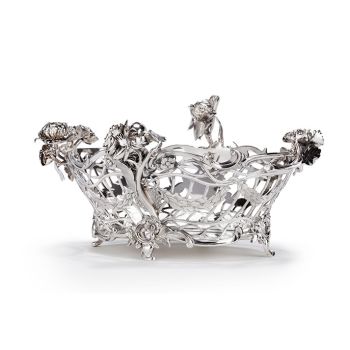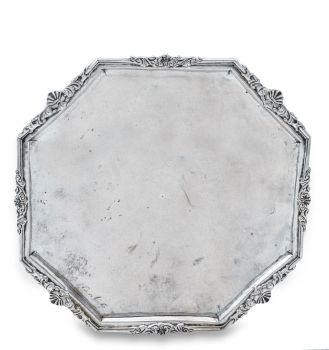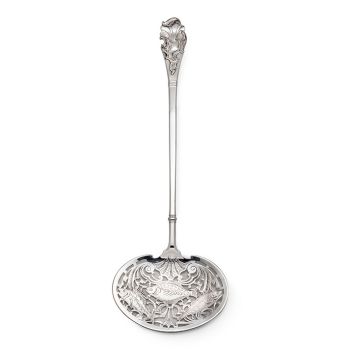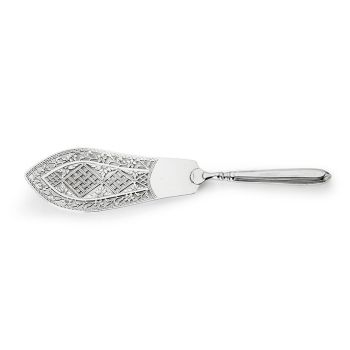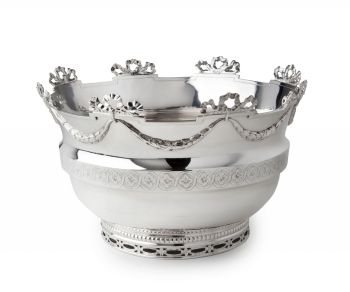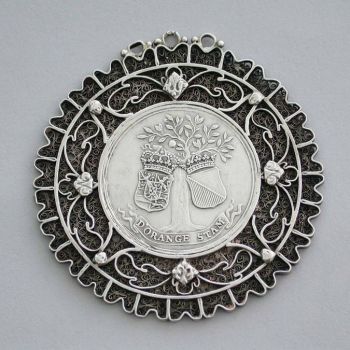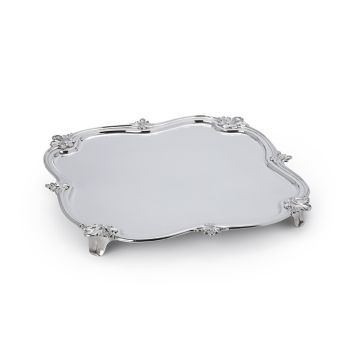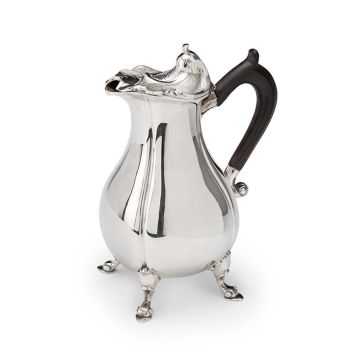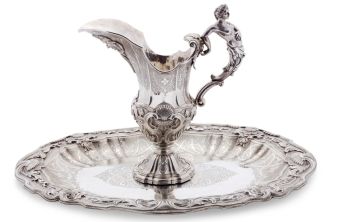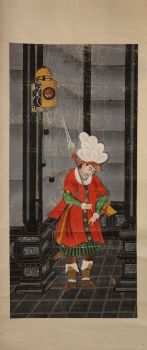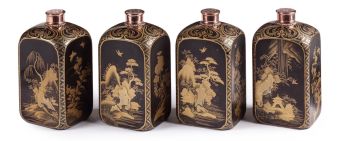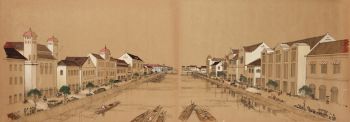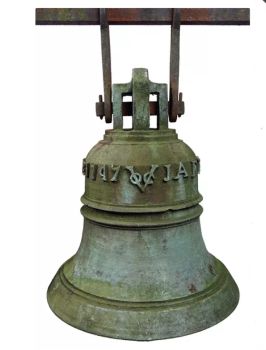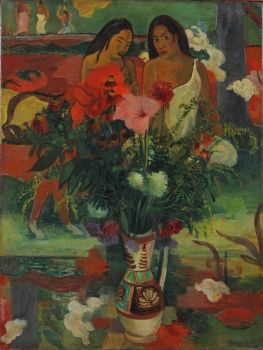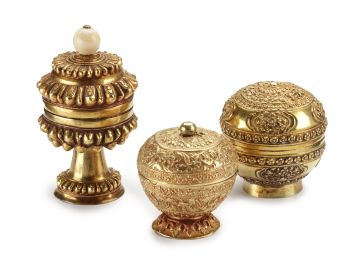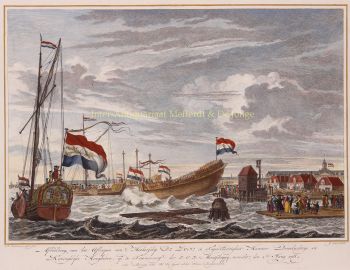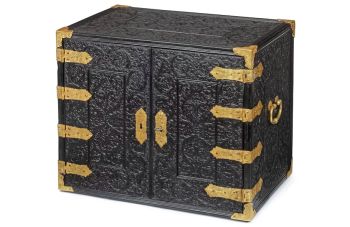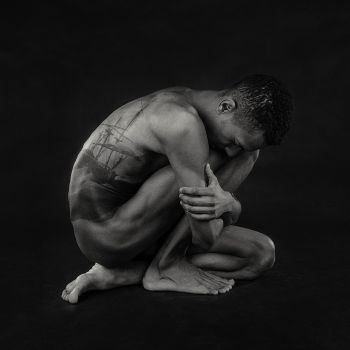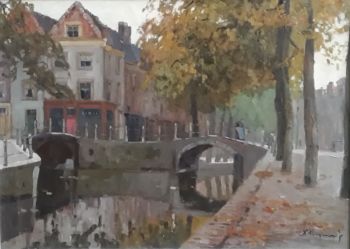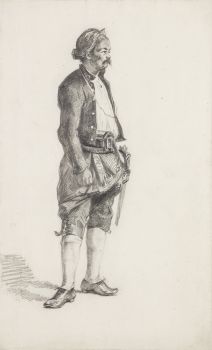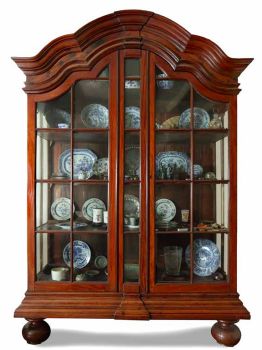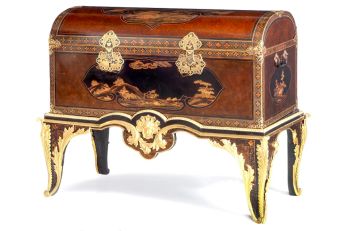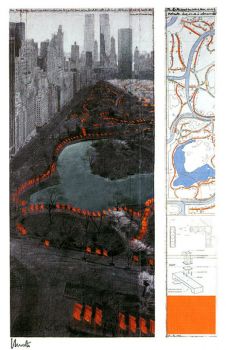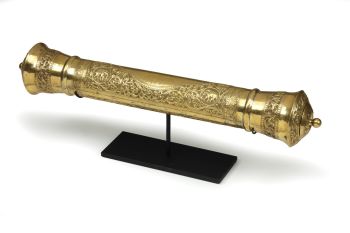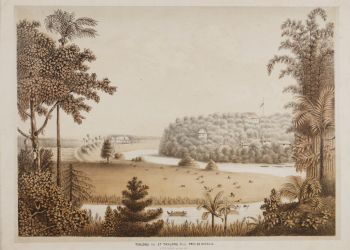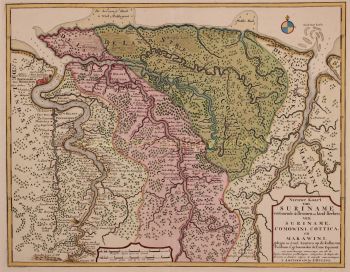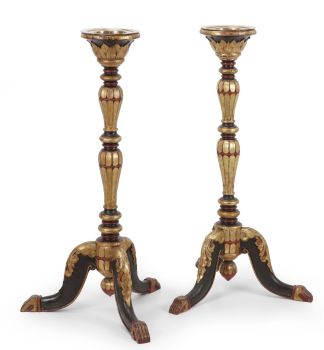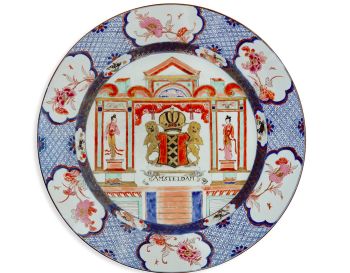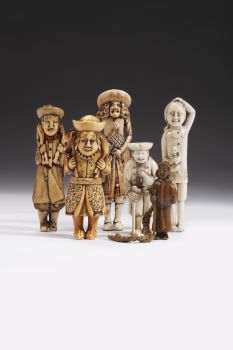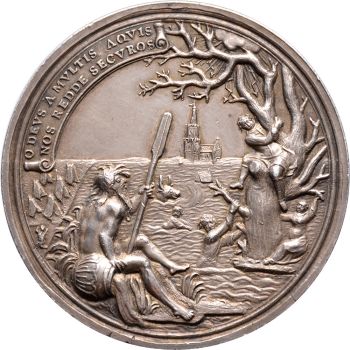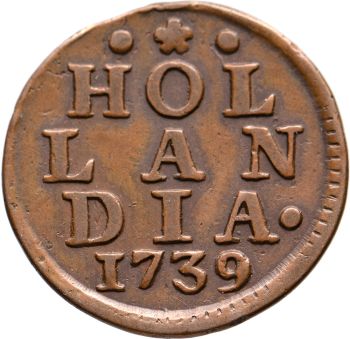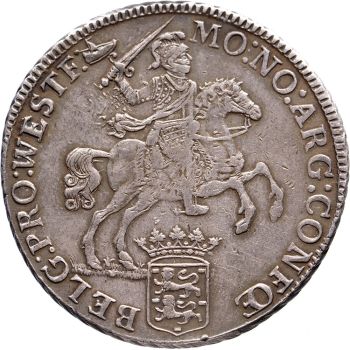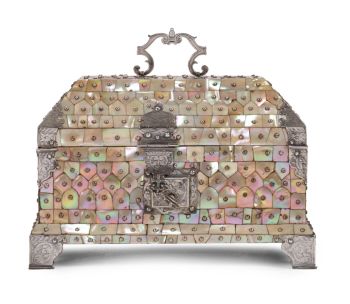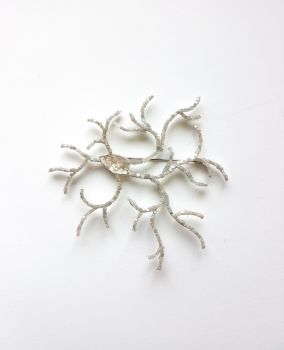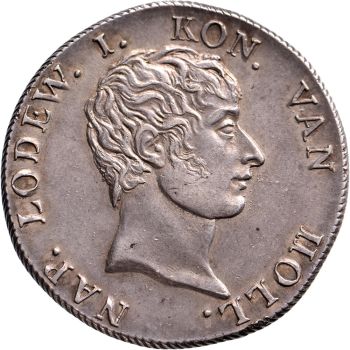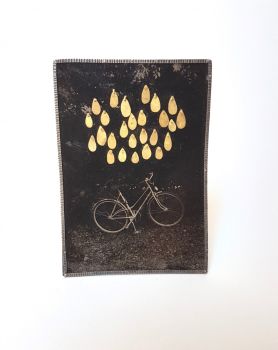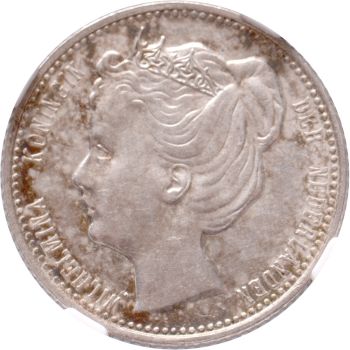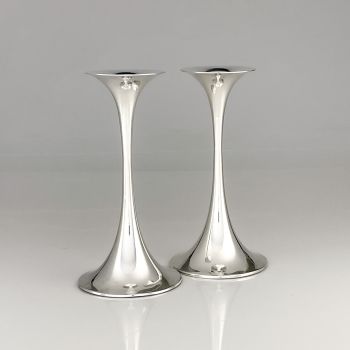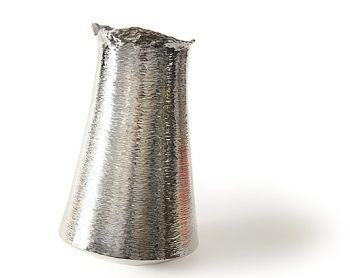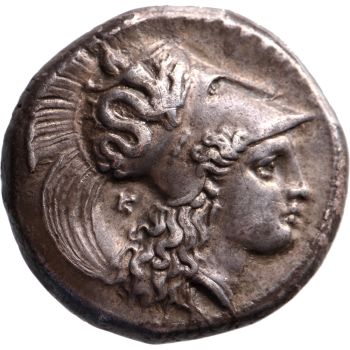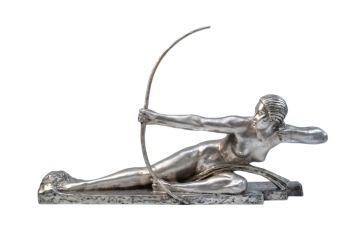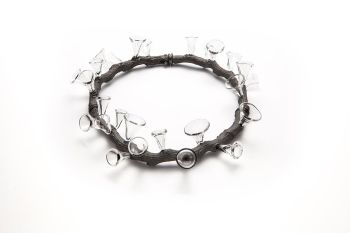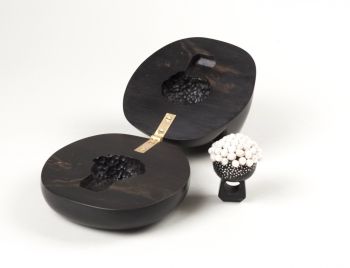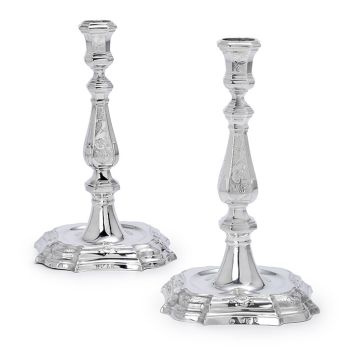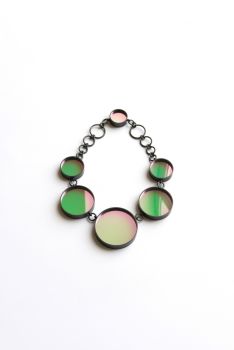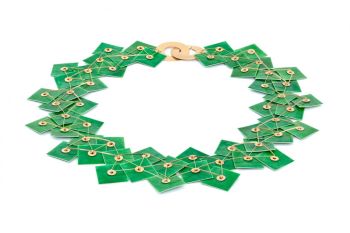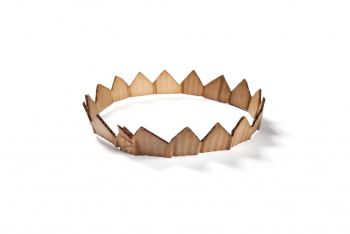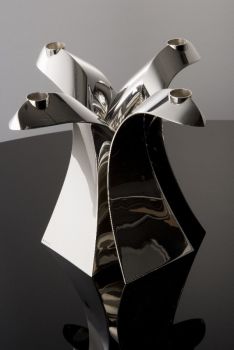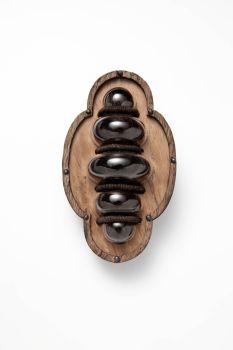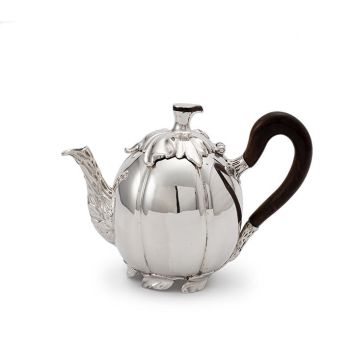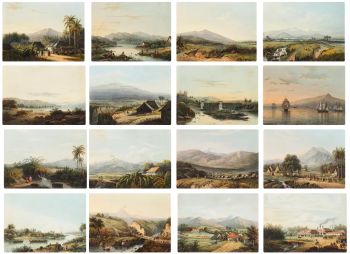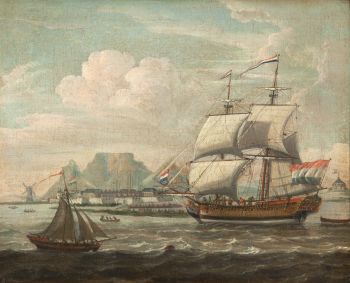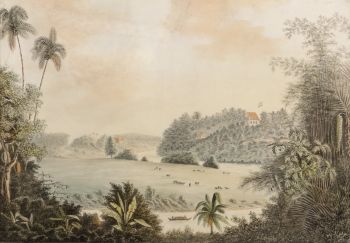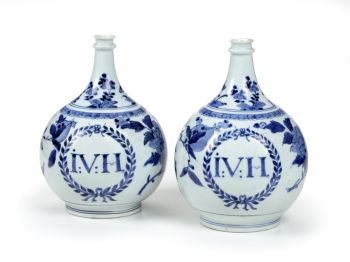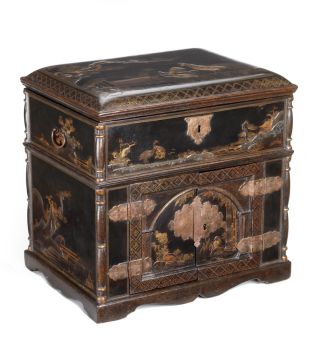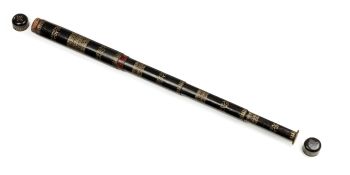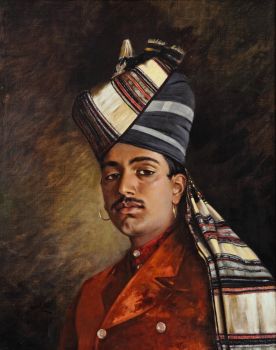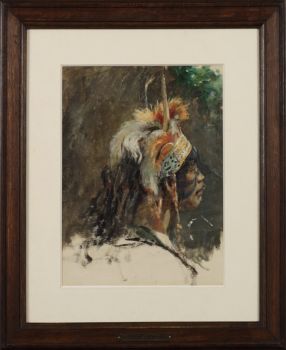AN EXTREMELY RARE COLONIAL SILVER SPOON AND FORK (NEW YORK) 1672
Unknown artist
Silver
16 cm
Currently unavailable via Gallerease
Zebregs & Röell - Fine Art - Antiques
- About the artworkAN EXTREMELY RARE 'GEDACHTENIS LEPEL EN VORK', COMMEMORATIVE SPOON AND FORK
Silver apparently unmarked, Dutch colonial, New Amsterdam (New York), circa 1672
The unusual triangular handles are decorated with zoomorphic ornaments in the “kwab-stijl”, the Auricular style, made popular in the Netherlands by Paulus van Vianen in the first half of the 17th century, the spoon engraved to the back of the bowl “SARA LEWES. Obijt 7 Iunij 1672” and the fork engraved to the back of the centre prong “SARA LEWES Ob. 7 Iunij 1672.”
L. 16.5 cm
Weight spoon: 43 grams
Weight fork: 34 grams
Note:
To commemorate a deceased relative in silver was a Dutch tradition in the 17th and 18th century. In the Dutch East Indies, particularly in Jakarta (Batavia), commemorative salvers were made in large quantities and still many survived although undoubtedly most have been melted down in the course of time. Sometimes salvers made in Holland were later engraved in Batavia. Commemorative spoons are much rarer (for an example made in Batavia 1694, in memory of Margareta van Hoorn, see Uit Verre Streken, March 2013, item 3).
The first time the present spoon and fork were described was by Stephan Welz in Cape Silver… , A.A. Balkema Rotterdam 1976, pg. 90-91. Stephan Welz assumed the set was made in the Cape, but that seems to be very unlikely. No “kwab-stijl” decorations are known in Cape silver because all silversmiths in the Cape were of German or English origin, Cape silver spoons are of Hanoverian or Old English style. Besides, no Cape silver spoons are known before the early 18th century.
The second mention of the set is by Kevin Brown, who bought the set in Cape Town, in A 1672 Dutch Memento Mori Spoon and Fork Set, in Silver Magazine, September/October 2008, pg. 20-24. Kevin Brown argues that the set is the earliest known New York memorial silver. In two further articles (A Dutch Memento Mori Spoon & Fork set, 1672. From New York? The Finial, Journal of the Silver Spoon Club of Great Britain. December 2011, Vol. 22, pg. 5-10 and Alena Buis and Kevin Brown Triffling Things? The Sara Lewes Memorial Lepel and Vork. Dutch Crossing, Vol. 36, No. 6, November 2012) Kevin Brown substantiates his supposition that the set was made in New York.
The “Kwab-stijl” was very popular in Holland and Friesland and many spoons with zoomorphic finials were made there in the first half of the 17th century. Dutch silver spoons are practically always marked. In New York one other spoon in the “Kwab-stijl” is known, made and marked by Cornelius Van Der Burch (New Amsterdam 1653 – New York 1699), commissioned for the funeral in New York of Henricus, son of Pieter and Hester Deursen in 1692 (collection of Yale University Art Gallery). The form of this spoon is almost identical to the present spoon.
Sara Lieuwes was born in Leeuwarden, Friesland in 1643, the younger sister of Sytske Lieuwes (1642). Sytske married Gerrit de Wees in 1662 and in 1663 they moved to New York where Sytske appears in the records of the Dutch Reformed Church spelt as “Lievens”. The Frisian name of “Lieuwes” apparently was not well understood by the church recorder and transformed into the common Dutch/Amsterdam name of “Lievens”. In the same way in the English colony New York, in 1672 Lieuwes may have been anglicised into Lewes. There are no records of Sara’s presence in New York. So presumably Sytske and Gerrit had the set made in New York (by Cornelius Van Der Burch?) as a memorial to Sara Lieuwes death in 1672. The other possibility is that Sytske and Gerrit had the set already with them when they moved to New York and only in 1672 engraved there. However, this seems unlikely, since the set shows no wear. Memorial spoons were made to commemorate a deceased loved one, not for practical use.
In addition, this would make the fork the oldest known silver fork made in New York. - About the artist
It might happen that an artist or maker is unknown.
Some works are not to be determined by whom it is made or it is made by (a group of) craftsmen. Examples are statues from the Ancient Time, furniture, mirroirs, or signatures that are not clear or readible but as well some works are not signed at all.
As well you can find the following description:
•“Attributed to ….” In their opinion probably a work by the artist, at least in part
•“Studio of ….” or “Workshop of” In their opinion a work executed in the studio or workshop of the artist, possibly under his supervision
•“Circle of ….” In their opinion a work of the period of the artist showing his influence, closely associated with the artist but not necessarily his pupil
•“Style of ….” or “Follower of ….” In their opinion a work executed in the artist’s style but not necessarily by a pupil; may be contemporary or nearly contemporary
•“Manner of ….” In their opinion a work in the style of the artist but of a later date
•“After ….” In their opinion a copy (of any date) of a work of the artist
•“Signed…”, “Dated….” or “Inscribed” In their opinion the work has been signed/dated/inscribed by the artist. The addition of a question mark indicates an element of doubt
•"With signature ….”, “With date ….”, “With inscription….” or “Bears signature/date/inscription” in their opinion the signature/ date/ inscription has been added by someone other than the artist
Are you interested in buying this artwork?
Artwork details
Related artworks
Unknown artist
AN UNUSUAL INDONESIAN LOBBED SILVER DISHlate 17th
Price on requestZebregs & Röell - Fine Art - Antiques
1 - 4 / 12Unknown artist
Een Gotische zuidelijke Nederlanden wandklok1580 - 1590
Price on requestNico van den Assem restauratie
 Curated by
Curated byDanny Bree
Unknown artist
A Surinam-themed Amsterdam long-case clock1746 - 1756
Price on requestZebregs & Röell - Fine Art - Antiques
 Curated by
Curated byGallerease Magazine
Unknown artist
A Surinam-themed Amsterdam long-case clock1746 - 1756
Price on requestZebregs & Röell - Fine Art - Antiques
 Curated by
Curated byGallerease Magazine
Unknown artist
Een Gotische zuidelijke Nederlanden wandklok1580 - 1590
Price on requestNico van den Assem restauratie
1 - 4 / 24Elisabeth Treskow
Afghan lapis lazuli inlaid with gold on a silver stand1950 - 1960
Price on requestJacob J. Roosjen SRI
Unknown artist
An Indian silver filigree casket with hinged coverearly 20th
Price on requestZebregs & Röell - Fine Art - Antiques
Reynier de Haan
An elegant Louis XVI Dutch Silver Monteith Bowl 1778
Price on requestJacob J. Roosjen SRI
Reynier de Haan
An elegant Louis XVI Dutch Silver Monteith bowl 1778
Price on requestJacob J. Roosjen SRI
1 - 4 / 24Shiba Kokan
Painting of a Fantasy Dutchmanearly 19th
Price on requestZebregs & Röell - Fine Art - Antiques
Unknown artist
The bell of the VOC fortress in Jaffna, Sri Lanka1747
Price on requestZebregs & Röell - Fine Art - Antiques
 Curated by
Curated byDanny Bree
Unknown artist
Two study portraits of Mas Marco Kartodikromo 1900 - 1950
Price on requestZebregs & Röell - Fine Art - Antiques
Unknown artist
Japanese transition-style lacquer coffer 1640 - 1650
Price on requestZebregs & Röell - Fine Art - Antiques
Unknown artist
A GILT-SILVER SRI LANKAN DOCUMENT SCROLL CONTAINER 19th century
Price on requestZebregs & Röell - Fine Art - Antiques
Unknown artist
Dutchmen in miniature (Netsuke)1700 - 1900
Price on requestZebregs & Röell - Fine Art - Antiques
1 - 4 / 24- 1 - 4 / 24
Abraham Salm
Twenty-four chromolithographs of Java after A. Salm”1801 - 1876
Price on requestZebregs & Röell - Fine Art - Antiques
Dutch School
Arrival of a Dutch East Indiaman in the Table Bay18th century
Price on requestZebregs & Röell - Fine Art - Antiques
Unknown artist
A Surinam-themed Amsterdam long-case clock1746 - 1756
Price on requestZebregs & Röell - Fine Art - Antiques
 Curated by
Curated byGallerease Magazine
Unknown artist
A RARE LARGE JAPANESE LACQUERED LEATHER TELESCOPE1750 - 1800
Price on requestZebregs & Röell - Fine Art - Antiques
1 - 4 / 12

